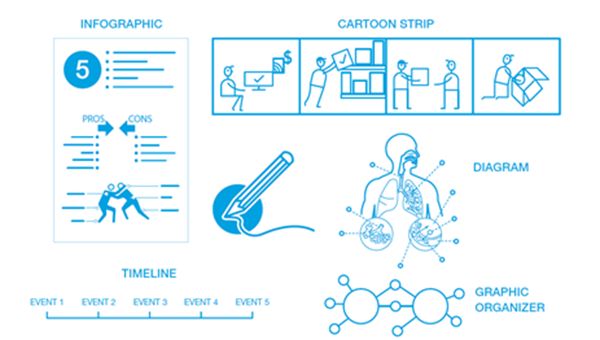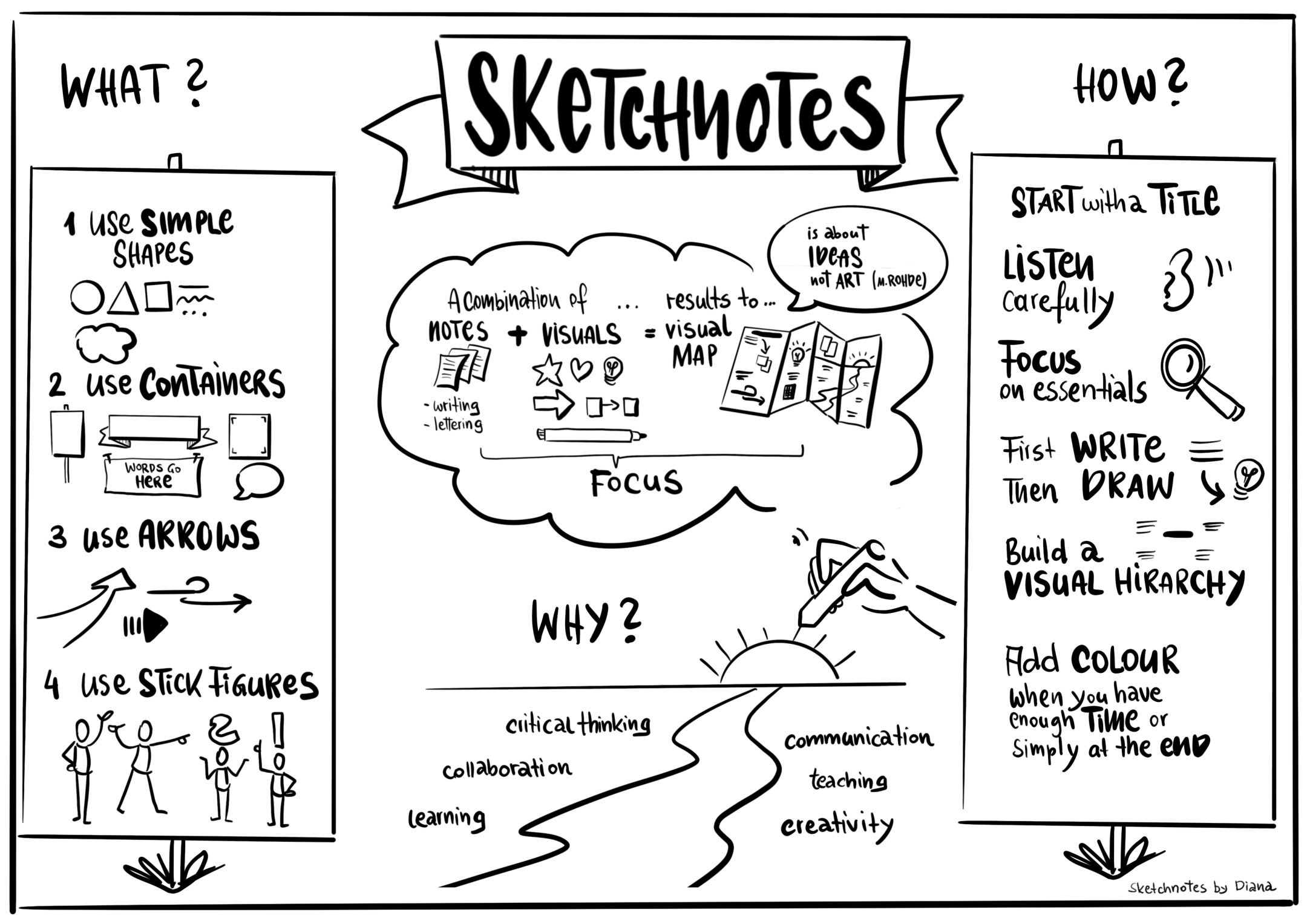Study strategies: Dual coding:
Enriching information:
Dual coding theory states that it’s easier to remember concrete concepts (such as apple, tree, or bottle) than abstract ones (such as intelligence, joy, or openness). It assumes that information in the form of images and language are processed using distinct yet interconnected systems in multiple ways. When information is perceived through multiple sensory channels, it can be better stored and remembered, because when two separate channels are active, the learning effect increases. Thus, when we combine words with pictures, we learn more effectively and train our working memory at the same time (Paivio 1971; 1976).
Remember: Graphs and visuals help you to learn effectively, regardless of your preferences. The best way to learn is to combine verbal (texts) and visual (graphics) content. But be careful not to overload your working memory. Too much of a good thing can be detrimental. The key to learning success is to include only relevant images as well as only relevant texts. Otherwise, you risk cognitive overload.
Below are some examples of ways to use visualisations effectively when studying. They typically include infographics, timelines, diagrams, mindmaps, concept maps, or drawings. But you may find other ways.

Concept Maps and MindMaps
This form of visualisation is particularly well suited for depicting related concepts and seeing how they connect, differ and overlap. For this, first create circles with the ideas, concepts and terms. Then create links between the circles. Start by creating a concept map from memory, without consulting your written materials. Look up the relevant parts in your materials only when you get stuck. Be creative and try it out. It’s crucial that you create your own concept map – copying is of no use here.
How to create a concept map:
Tip: Did you know that classic summarising is an incredibly ineffective way to learn? You’ll be more efficient if you create your own “big picture” every week or so from your memory. Compile what you learned during a week and establish the connections and see how the concepts relate.
Graphic Recording (Sketchnotes)
Taking good notes is anything but easy and it’s worth trying out new methods to become efficient in the long term. One promising approach is graphic recording, also known as sketchnotes. This method is all about visually representing information and ideas to help you understand them well later. You can use keywords, symbols and drawings for this purpose.
Sketchnotes are images that are more like a draft than a finished drawing. The advantage of this method is that it highlights relationships and thus provides a better overview of a topic.

Making sketchnotes:
Be sure to use a few symbols from the beginning that say a lot with just a few strokes.
For example:


Your repertoire of symbols will expand and refine as you learn the method. You can also use creative techniques to develop original image ideas.
Follow these steps when designing your notes:
- Identify the main idea and place it at the centre of the page (you can also formulate it as a question).
- Determine relevant symbols for the central topics.
- Structure your note page: Think about what to put where.
- Make your notes succinct in an appropriate place on the sheet. Don’t forget to add a meaningful title!
- Add symbols, drawings or graphs to your notes.
- Show connections between the different areas (with lines or symbols), try to highlight relationships, contrasts or processes.
- Revise your notes: Highlight ideas and use colours. Make frame around them as you like.
What is sketchnoting?:
Basic sketchnote tips:
The power of sketchnotes:
Try out and discuss:
- Have you worked with sketchnotes before? How did you like it? What did you find challenging?
- What are the advantages of sketchnoting? What are its limitations?
- In which courses could you imagine using sketchnotes?
The Memory Palace (Method of Loci)
So far we’ve been talking about visualisation. But research has shown that mental images, too, can help us to remember, and we’ll therefore introduce you to some of these mnemonic aids: Does the “loci method” or the “mind palace” ring a bell? They are two of the most important memory aids.
Here’s how they work: Once you’ve gathered all your content, break it down into key points. Avoid whole, complete sentences when doing this. Choose a location or “locus” as your memory palace. The best place is one that you know well and can recall at any time, such as your living room or favourite coffee shop. Now start by linking the key points to a put into that locus. Imagine something crazy at that place that reminds you of the main idea. It’s like a skit or a story, whereby you link mental images to a set of physical locations to help you make associations.
Note: The memory palace is not a learning method, but only a tool to organise material you’ve already learned and understood so that you can recall it when the exam comes around – which means you must have understood the topic thoroughly before.
The memory palace: Can you do it?:
Resources:
Weinstein, Y., Sumeracki, M., & Caviglioli, O. (2018). Understanding how we learn. A visual guide. London: Routledge.
Cover picture: «folders» by Ben Davis from the Noun Project
